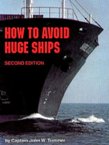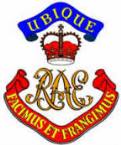RangerJoe
Posts: 13450
Joined: 11/16/2015
From: My Mother, although my Father had some small part.
Status: offline

|
Well, this quote may be appropriate here, I will quote the entire thing from the article:
quote:
One day he won the training squadron emblem for stupidity: the Flying Jackass, a large aluminum likeness of a donkey, awarded to anyone who broke a safety regulation. He wore it for two weeks until another student pilot won it away from him. Beut he insisted on keeping that particular badge. When he took command of the Saratoga, he said, he would hang it on the bulkhead of his cabin. Any time he got ready to raise hell with some pilot for an infraction of rules, he was going to look at that Flying Jackass and think twice.
Such tales began the legend of Bill Halsey, the only really flying commander of a carrier, and the true aviators got to love him. When he took over his carrier, he continued to add to bits to the legend. From the Saratoga he went to the Enterprise, one of the new carriers of the fleet, as commander of Carrier Division Two [COMCARDIV Two] and he was promoted to admiral. One day a young officer made an error that delayed the launch of planes. Admiral King was present at the time, and King was a noted disciplinarian (who put an end to the advancement of one naval captain because he ran a cruiser aground in a fog trying to get King back to Washington to make an appointment).
'Who was responsible for the delay?' King demanded by signal, and on the bridge of the Enterprise souls quaked as the message was taken to Admiral Halsey's bridge.
'COMCARDIVE Two', was the reply.
There was no further word from the flagship. But on board the Enterprise the story went from keel to masthead. Admiral Halsey was the sort of officer who protected his men, it said
Edwin Hoyt, Closing the Circle
https://leadandgold.blogspot.com/2016/04/lessons-in-leadership-admiral-william.html
So the problems could be anywhere in the system and it takes awhile to train up the efficacy which the Japanese had already apparently done.
He was a Navy Captain in flight school so he could get his wings so he could command the Saratoga.
_____________________________
Seek peace but keep your gun handy.
I'm not a complete idiot, some parts are missing!
“Illegitemus non carborundum est (“Don’t let the bastards grind you down”).”
― Julia Child
|
 Printable Version
Printable Version













 New Messages
New Messages No New Messages
No New Messages Hot Topic w/ New Messages
Hot Topic w/ New Messages Hot Topic w/o New Messages
Hot Topic w/o New Messages Locked w/ New Messages
Locked w/ New Messages Locked w/o New Messages
Locked w/o New Messages Post New Thread
Post New Thread